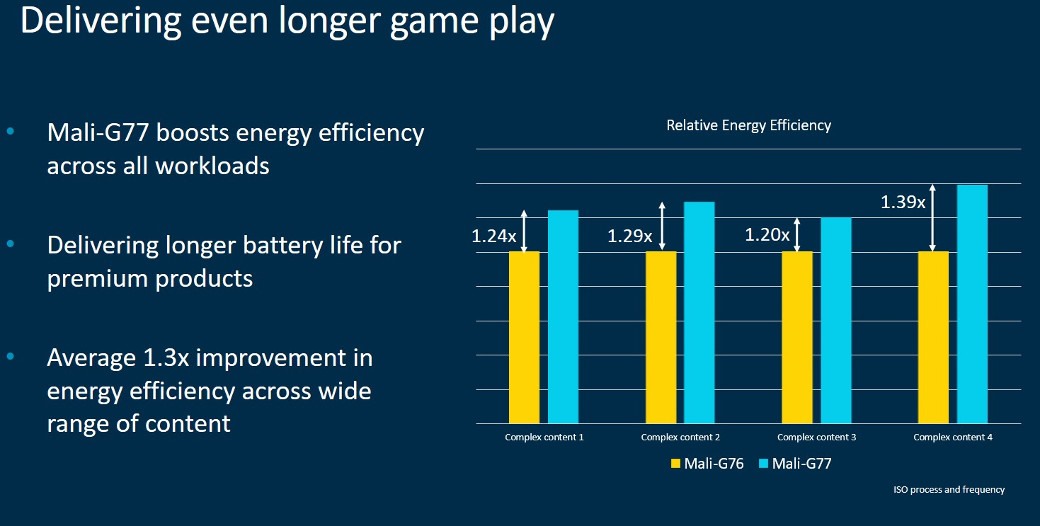While TSMC is already mass-producing the brand-new 7nm processors that will power this year’s iPhone 11 and Huawei Mate 30 flagships, Arm has just announced the brand new reference designs for the processors that will hit high-end smartphone next year, like the Galaxy S11, OnePlus 8, Pixel 5, and other 2020 Android flagships.
We’re looking at several new silicon chips, including the Cortex-A77 CPU, Mali-G77 GPU, and the Arm Machine Learning (ML) processor.
The Cortex-A77 CPU is supposed to deliver 20% instructions per clock (IPC) speed gains compared to this year’s Cortex-A76-based chips (like the Snapdragon 855 and the Kirin 980). The performance innovation, Arm explains, is enabled by the second-gen 7nm designs following this year’s processors.
The new Cortex-A77 chips will handle the increasing computing demands that come from extra workloads on flagship phones, including the use of AI cameras, 3D scanning, face recognition, voice recognition, ML in gaming, and ML in AR. 5G will also play a central role in next-gen devices, and the new Arm chips will support future 5G-ready devices, whether they’re smartphones or always-on laptops.

The new Mali-G77 GPU with its new Valhall architecture will complete the Cortex-A77 package, as it’s expected to deliver notable improvements over the Mali-G76 when it comes to speed (40% increase), energy-efficiency (30% gains), and on-device ML workload (60% improvement) — a detailed explanation of what goes on under the hood is available at this link.
Finally, the new Arm ML neural processing unit (NPU) will bring more powerful on-device ML features to smartphones. That means the handset won’t have to keep sending data to the cloud for processing, and instead will deal with the tasks at hand locally. The NPU will help power several experiences, including 3D face unlock, advanced portrait modes, depth control and portrait lighting in photography, and Arm says it’ll do it efficiently, too. The ML processor will deliver “an industry-leading power efficiency of 5TOPs/W.”

Arm’s announcements do not mention any specific device names, but the Galaxy S11, OnePlus 8, Pixel 5, Huawei Mate 30 and P40, and virtually every other 2020 Android flagship will be based on Arm’s new designs.








